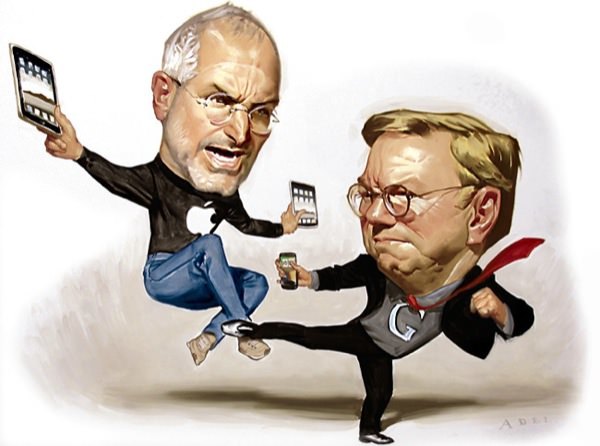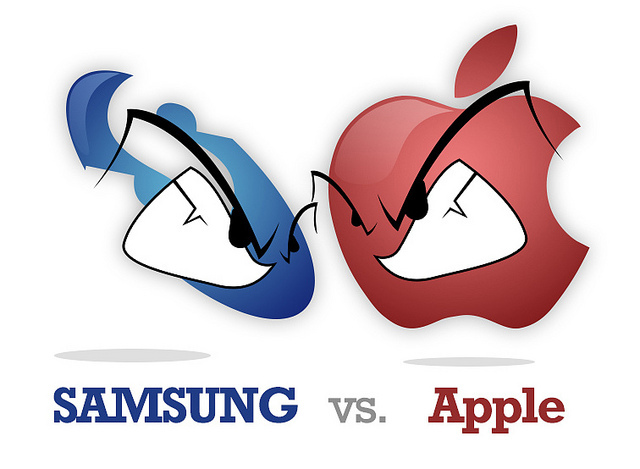Patent Wars: Meeting Point - USA

I would like to mark this post with such an ornate title. He talks about how we at Parallels work with patents. In fact, we have a lot of them, and we are constantly replenishing the patent portfolio, and for that there is one good reason. From this article you will learn why to engage in patenting and where it is best to protect your rights.
To patent or not to patent, that is the question
Do I need to patent their development and inventions? If you are doing business and making money, then of course you need. After all, otherwise someone can patent, it would seem, the technology developed by you before you and its use will become a problem. Financial problem.
')

Patents are territorial rights. A patent protects an invention in the country in which it is registered. That is, if you want to sue someone or, on the contrary, defend against a claim, you must have a registered patent in a particular country.
The question arises, how and where should one patent its technologies? There are a lot of different approaches to patenting: you can get a patent in Russia, using one of the international conventions - Paris, European, Eurasian, or any other, but Parallels long-term experience in the market has shown that patent disputes often come down to decisions in US courts . And in the US, if you do not have a US patent (USPTO), then you lose.

Why it happens? The fact is that over the past few decades, it was in the United States that the most intellectual property was accumulated, and the amount of patenting in the States is the largest. But that's not all - America has the largest market for IT technologies, and it is there that the vast majority of leading technology companies operate or have representative offices. As a result, the United States becomes the de facto platform for any more or less large patent disputes. No, no one denies the possibility of recognizing local patents in different countries, but given the dominance of the North American market, these losses will be much less than the denial of intellectual property in the most capacious market. So, we purposefully expand our patent portfolio in the States, and practice shows that this is fully justified.
What to patent?
Before we share the answer to this question, which we have developed within the company, we will tell you a little about the situation in the patent space. The fact is that so many technologies and solutions are similar to each other - just like Apple and Samsung phones. As a result, only the court can find out who is right and who is to blame, but very often patent cases do not even go to court because companies have mutual complaints about the use of intellectual property. It often turns out that it is easier for organizations to come to an agreement with each other directly than to spend significant funds on patent litigation, if it is not obvious who will be right in court.

The fact is that a successful company always faces complaints about the use of foreign intellectual property. The question is not whether you will be sued - the question is when this happens. And the greater the annual turnover of your company, the greater the likelihood that you will have claims from someone from the owners in the near future. And having your own patents for each "chip" and the development increases your chances of defending the rights-seeking holders and even making counterclaims.
Considering the above, we are sure that we should consider all possible ideas that come up with developers for patenting. However, it is necessary to take into account 3 important criteria: patentability / novelty, usefulness and non-obviousness.
Cost of patenting
Turning to various patent agencies, you can come up with a variety of offers and prices, but in reality, in our opinion, it is worth spending money on a US patent. In any case, the priority for the Parallels country is the United States. This is one of the key markets for us. Although, for example, for a hardware product and blocking its copying, China may be a priority. A patent can cost $ 15-35 or more thousand dollars if we are talking about lifetime protection of intellectual property. Of course, not every startup can raise such a price, but in this case there is a preliminary application, which costs $ 3,000 and can be transferred over time to the status of a permanent patent. This approach will protect your intellectual property, while delaying the main payments.

Creativity is welcome!
In Parallels, for example, patenting is one of the cornerstones of development. Before we introduce new features into products, our developers and engineers have the opportunity to describe and formalize them in order to fill out the next patent application. Moreover, we strongly encourage and reward creative and initiative people for their help in patenting new opportunities. Agree how pleasant it is to describe the hand-created functionality, as well as get a bonus from the company for it!

The procedure itself consists of several stages. After presenting the description of the invention to the person responsible for intellectual property in the company, it is necessary to identify the possibility of patenting the presented idea, based on the above criteria. Further, patent attorneys draw up an application for an invention, which is filed with the patent office of the required country. During consideration by the office of the application, there may be some questions regarding the invention that may delay the whole process. As a result, with the successful completion of all stages, you will receive a patent for your invention!
However, property can be stolen if someone starts to understand its value and vulnerability. Therefore, when working with patents, we follow the following rules:
1. Do not discuss your open source patent plans.
2. Do not discuss them with competitors.
3. Work only with a clear and understandable agreement with patent attorneys.
4. Do not release new features until they have been submitted.
This approach has already proven its worth to protect intellectual property around the world. Expanding the patent portfolio every year, we successfully win in patent wars and encourage employees to create new, interesting concepts, making their work more creative.

Each company needs its own number of patents, but according to generally accepted standards it is considered that a successful startup requires 3-5 patents initially, plus at least 1 patent per year for every 3 development engineers. But if you have the opportunity, and there is something to patent - you should not postpone it indefinitely, even if the author of the idea says that it is insignificant. After all, if you inject something into your product, it means there is already value in it, and it means you may have patent risks. So the small thing is: to find a worthy idea and money for its patenting.
Source: https://habr.com/ru/post/313870/
All Articles